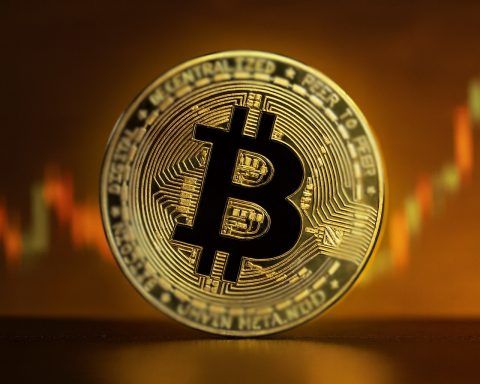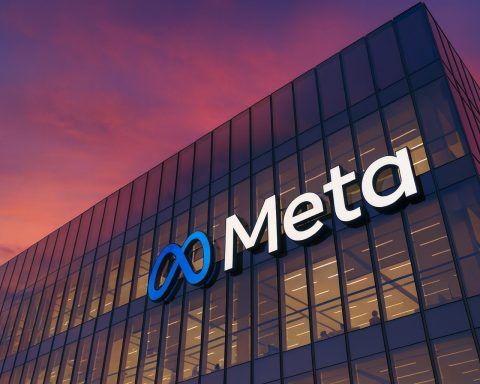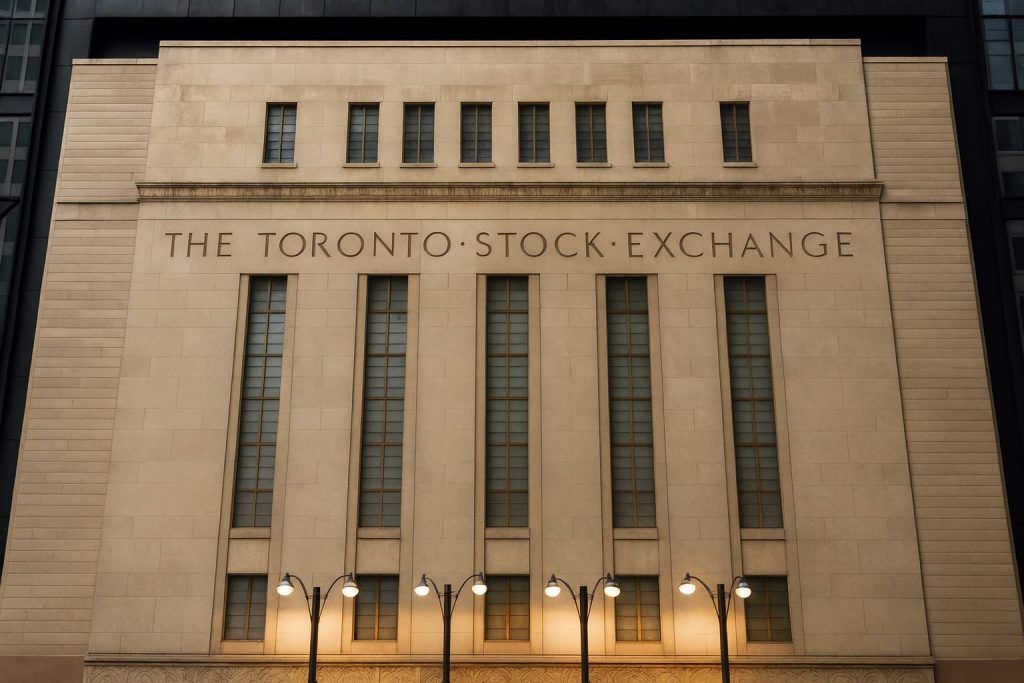European equity markets slumped on Tuesday, 18 November 2025, in a broad risk-off move that dragged the pan‑European STOXX 600 to its worst daily loss since August and a one‑month low. Concerns over an overheated AI trade, fading hopes of a near‑term U.S. Federal Reserve rate cut, and fresh policy headlines from Brussels combined to knock sentiment across the EU stock market today. [1]
Key moves in the EU stock market today (18 November 2025)
- STOXX 600 fell about 1.8% to roughly 561.6, closing at a one‑month low and logging its steepest daily drop since August. [2]
- Germany’s DAX 40 and France’s CAC 40 each lost around 1.7–1.9%, with the DAX nearing a five‑month low. [3]
- UK’s FTSE 100 closed 1.3% lower at about 9,552, underperforming after sharp falls in banks and miners. [4]
- A key European volatility gauge jumped to roughly 22.9, the highest since the U.S. regional bank turmoil in mid‑October, signalling a sharp rise in investor anxiety. [5]
- Banks, autos and miners led the sell‑off, with sector indices down around 2.6–2.9%, while technology stocks also dropped nearly 1.8%. [6]
- Big single‑stock moves included Ocado (‑17–20%), Umicore (‑14%+), ABB (‑4%) and Novo Nordisk (‑1%), while Roche jumped nearly 7% on positive cancer‑drug trial data. [7]
Market snapshot: Europe follows global sell‑off lower
The tone across European bourses was negative from the open, but losses deepened as Wall Street followed suit and U.S. tech names sold off again.
- The STOXX 600 closed down 1.8% at about 561.6, while the broader FTSEurofirst 300 slid close to 1.9%, mirroring declines in global benchmarks. [8]
- In the euro area’s two biggest markets, Paris’ CAC 40 fell roughly 1.9% and Frankfurt’s DAX 40 about 1.7–1.8% by the time European trading wrapped up. [9]
- London was hit too: the FTSE 100 slid 1.3% to 9,552.30, while the mid‑cap FTSE 250 dropped 1.2% and the AIM All‑Share lost 1.3%. [10]
- Volatility spiked: the region’s equity volatility barometer climbed by roughly 2.7 points to just under 23, a high not seen since mid‑October’s banking jitters. [11]
By the London close, U.S. indices were also firmly in the red, with the Dow, S&P 500 and Nasdaq all down around 1% or more, reinforcing the sense of a synchronised global pullback. [12]
What’s driving today’s sell‑off? AI jitters, Fed doubts and delayed U.S. data
1. AI valuation fears ahead of Nvidia earnings
The immediate catalyst for today’s risk‑off move was renewed anxiety around the AI trade:
- Investors are bracing for Nvidia’s quarterly results on Wednesday, widely seen as a litmus test for whether the AI boom can still justify lofty valuations in tech and chip‑related names. [13]
- European shares in companies exposed to AI infrastructure, such as Siemens Energy, Schneider Electric and ABB, all traded sharply lower, with one Reuters‑linked report indicating declines of around 2–6% in these names. [14]
- Alphabet CEO Sundar Pichai added fuel to the debate by warning there is “irrationality” in the current AI boom, and stressing that no company is completely insulated if an AI bubble bursts. [15]
The upshot: investors who had crowded into AI‑linked stories spent Tuesday de‑risking, and Europe‑listed beneficiaries of the theme took a hit.
2. Fed rate‑cut optimism fades
Markets have also been re‑pricing expectations for U.S. interest‑rate cuts:
- Hawkish remarks from Federal Reserve officials in recent days have tempered hopes of a December rate cut, pushing traders to dial back how soon and how fast policy might be eased. [16]
- A backlog of U.S. economic data, including long‑delayed jobs numbers, has left investors flying partly blind, encouraging them to trim risk rather than lean into equities ahead of Thursday’s labour‑market release. [17]
Higher‑for‑longer rates tend to weigh more heavily on long‑duration assets like growth and tech stocks, helping explain why AI‑linked names and richly valued sectors were at the centre of today’s European sell‑off.
3. UK CPI and budget risks lurking in the background
For UK assets, Tuesday’s declines came against a backdrop of upcoming inflation data and fiscal uncertainty:
- Sterling was broadly flat as traders waited for October CPI data due Wednesday, which could shape expectations for the Bank of England’s next move. Markets are currently pricing in a meaningful chance of a rate cut as early as December. [18]
- At the same time, investors are watching the 26 November UK budget, where Chancellor Rachel Reeves is expected to find tens of billions of pounds in extra revenue, keeping pressure on UK gilt yields and financials. [19]
Reports suggesting banks could face higher sector‑specific taxes in that budget made UK financials one of the weakest areas of the FTSE 100 today. [20]
Sector performance: banks, autos and miners under pressure
The pain in the EU stock market today was broad‑based, but some sectors clearly stood out.
Banks: double‑hit by rates and tax fears
- Across Europe, banking stocks fell about 2.9%, making them one of the largest drags on the STOXX 600. [21]
- In the UK, major lenders HSBC, Barclays, NatWest and Lloyds dropped between roughly 2–3.5%, after a local report suggested the sector may face a tax rise in next week’s budget. [22]
Higher volatility, uncertainty over the Fed path, and the prospect of more taxes on profits make for an unhelpful mix for European bank shares.
Autos and cyclicals: growth worries bite
- The autos index shed around 2.9%, with names such as Stellantis sliding more than 4% amid worries that weaker global demand or persistent high rates could hit car sales and financing. [23]
- Broader cyclical sectors that depend heavily on growth and trade, including some industrials and consumer‑discretionary names, also underperformed the wider market. [24]
Miners and industrial metals: policy in focus
- European miners fell roughly 2.6%, a move that came as Brussels unveiled plans to curb exports of aluminium scrap from early 2026 to prevent shortages within the bloc and support decarbonisation efforts. [25]
- The European Commission highlighted that aluminium scrap exports reached a record 1.26 million tonnes in 2024, up about 50% over five years, and argued that rising outflows could leave domestic industry short of a key low‑carbon input. [26]
While the measures are still in the consultation phase, the prospect of new trade frictions and changing supply dynamics added another layer of uncertainty for metals and materials stocks.
Biggest stock movers across European markets
Roche shines on breakthrough breast‑cancer data
Roche was one of the few bright spots in Tuesday’s session:
- Shares in the Swiss pharma giant jumped around 6.7–6.8% after the company reported positive Phase III resultsfrom its lidERA trial of oral SERD giredestrant in early ER‑positive, HER2‑negative breast cancer. [27]
- Roche said giredestrant significantly improved invasive disease‑free survival versus current standard endocrine therapy in the adjuvant setting, positioning the drug as a potential new standard of care if regulators agree. [28]
The result builds on earlier positive data from the evERA trial in advanced disease, reinforcing investor conviction in Roche’s late‑stage oncology pipeline.
Ocado plunges as Kroger shuts robotic warehouses
UK online grocer and tech group Ocado was among the day’s worst performers:
- Shares slumped roughly 17–20% to their lowest levels in over a decade after U.S. partner Kroger announced plans to close three automated customer‑fulfilment centres in early 2026. [29]
- Ocado said the closures would cut annual fee revenue by about $50 million, though it expects more than $250 million in compensation for early termination; the news nevertheless raised fresh doubts about the scalability of its U.S. model. [30]
The stock’s crash was a major drag on the FTSE 100 and a vivid reminder of how quickly sentiment can swing in highly rated, story‑driven names.
Umicore sinks after GBL trims its stake
Belgian materials and battery‑technology group Umicore also suffered a steep decline:
- The shares fell around 14% after major shareholder Groupe Bruxelles Lambert (GBL) sold about 8% of Umicore’s equity, effectively halving its stake, in a deal worth roughly €300 million. [31]
- GBL framed the transaction as part of a broader portfolio‑streamlining and divestment strategy, with a 90‑day lock‑up on its remaining stake, but the move still unnerved investors who had seen Umicore rally more than 60% year‑to‑date. [32]
ABB, Novo Nordisk, Zurich Insurance and Crédit Agricole under pressure
Elsewhere in continental Europe:
- ABB fell around 4% despite raising its profitability targets, suggesting investors were looking for more ambitious guidance or taking profits after a strong run. [33]
- Danish pharma heavyweight Novo Nordisk slipped about 1% after announcing price cuts for its injectable obesity drug Wegovy in the United States, fuelling concerns over future margins in the fast‑growing obesity‑treatment market. [34]
- Zurich Insurance dropped roughly 2% even as management confirmed it remains on track to hit its 2025‑27 financial targets, highlighting investors’ intolerance for anything short of upside surprises on a risk‑off day. [35]
- French lender Crédit Agricole lost about 2% after unveiling its new medium‑term plan, ACT 2028, which includes strategic investments but also implies ongoing cost and capital commitments. [36]
UK standouts: banks slide, Imperial Brands and ICG buck the trend
In London:
- Banks HSBC, Barclays, NatWest and Lloyds fell between roughly 2–3.5%, hurt by both global risk aversion and fears of a bank‑tax hike in the upcoming UK budget. [37]
- Housebuilder Crest Nicholson plunged about 15% after warning that full‑year profit could come in at or slightly below the lower end of guidance, blaming a subdued housing market and lingering uncertainty around tax policy. [38]
- Ocado dominated the downside, but there were winners: private‑equity group ICG climbed around 4.5% on better‑than‑expected half‑year results and news that Amundi will take just under 10% of the company; defensive tobacco group Imperial Brands rose more than 2% on solid earnings. [39]
Macro backdrop: EU forecasts steady growth and moderating inflation
Today’s market moves came even as fresh official data and forecasts painted a picture of modest but steady growth in Europe.
European Commission Autumn 2025 forecast
The European Commission’s Autumn 2025 economic forecast, published this week, projects: [40]
- EU real GDP growth of about 1.4% in both 2025 and 2026, rising slightly to 1.5% in 2027.
- Euro area growth of around 1.3% in 2025, 1.2% in 2026 and 1.4% in 2027.
- Euro‑area inflation slowing from 2.4% in 2024 to 2.1% in 2025, then hovering near the ECB’s 2% targetthereafter. [41]
The forecast also notes that EU general‑government deficits are likely to edge higher, driven largely by increased defence spending, rising interest costs and some revenue shortfalls, even as labour markets remain relatively tight. [42]
Eurostat’s November “European Statistical Monitor”
Separately, Eurostat released the latest European Statistical Monitor, a monthly dashboard of short‑term indicators across the EU: [43]
- The publication highlights continued moderate economic expansion, low unemployment, and improving business sentiment.
- Environmental metrics are also improving, with lower electricity consumption and a rising share of power from renewable sources, alongside declining greenhouse‑gas emissions.
In other words, the real‑economy data look relatively steady, but markets are currently focused far more on valuation risk, AI‑related hype cycles and global policy uncertainty than on incremental macro improvements.
How today’s moves fit into the bigger picture for EU stocks
Put together, the EU stock market today is caught at the crossroads of three powerful forces:
- Valuation reset in tech and AI
The AI boom has powered much of the equity rally over the past year. Now, with U.S. megacaps wobbling and Nvidia’s earnings looming, investors are reassessing how much future growth they are willing to pay for. European AI‑adjacent names—from industrial automation to power equipment—are being repriced alongside their U.S. peers. [44] - Interest‑rate and fiscal uncertainty
Markets remain unsure how quickly central banks, especially the Fed and the BoE, will pivot to more accommodative policy. At the same time, higher defence and climate‑transition spending, plus national budget constraints, are starting to matter more for bond markets and rate expectations—and, by extension, equity valuations. [45] - Policy and trade shifts within the EU
Moves like the planned restriction of aluminium scrap exports underscore how the EU is reshaping trade policy to support its green‑transition industrial strategy. These steps may be positive for domestic producers long‑term, but they also introduce new uncertainties for global supply chains and commodity markets in the near term. [46]
What to watch next
Looking beyond today’s sell‑off, investors in EU stocks will be watching several key catalysts:
- Nvidia earnings (Wednesday, 19 November 2025) – a crucial test of whether AI‑related revenue growth can catch up with valuations, with direct implications for European tech and industrial names tied into AI infrastructure. [47]
- Delayed U.S. jobs data (Thursday) – fresh information on the U.S. labour market could either reinforce or challenge the market’s current scepticism about near‑term Fed cuts. [48]
- UK CPI and the 26 November budget – both will shape expectations for UK rates, fiscal policy and sector‑specific taxes, particularly on banks and high‑earning companies. [49]
- Follow‑up on EU aluminium scrap export rules – details of the eventual policy design, expected in 2026, will be closely watched by metals producers, recyclers and heavy industry. [50]
For now, the message from Tuesday’s trading is clear: valuation and policy risk are back at the centre of the story, and the EU stock market is trading more on global narratives—AI, Fed policy, and trade frictions—than on local growth data.
References
1. m.economictimes.com, 2. m.economictimes.com, 3. m.economictimes.com, 4. www.lse.co.uk, 5. m.economictimes.com, 6. m.economictimes.com, 7. m.economictimes.com, 8. m.economictimes.com, 9. m.economictimes.com, 10. www.lse.co.uk, 11. m.economictimes.com, 12. www.reuters.com, 13. www.reuters.com, 14. m.economictimes.com, 15. www.lse.co.uk, 16. m.economictimes.com, 17. www.reuters.com, 18. www.reuters.com, 19. www.reuters.com, 20. www.lse.co.uk, 21. m.economictimes.com, 22. www.lse.co.uk, 23. m.economictimes.com, 24. www.finanznachrichten.de, 25. m.economictimes.com, 26. www.reuters.com, 27. www.finanznachrichten.de, 28. assets.roche.com, 29. www.lse.co.uk, 30. www.reuters.com, 31. m.economictimes.com, 32. ng.investing.com, 33. www.finanznachrichten.de, 34. www.finanznachrichten.de, 35. www.finanznachrichten.de, 36. www.finanznachrichten.de, 37. www.lse.co.uk, 38. www.lse.co.uk, 39. www.lse.co.uk, 40. economy-finance.ec.europa.eu, 41. economy-finance.ec.europa.eu, 42. economy-finance.ec.europa.eu, 43. ec.europa.eu, 44. www.reuters.com, 45. economy-finance.ec.europa.eu, 46. www.reuters.com, 47. www.reuters.com, 48. www.reuters.com, 49. www.reuters.com, 50. www.reuters.com







